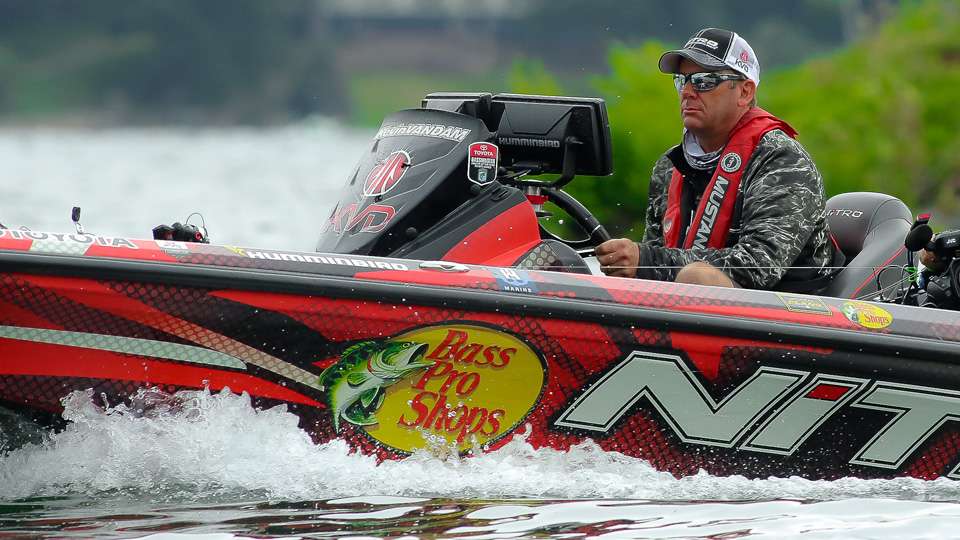
Last week I talked about the spawn and how various conditions can affect it, especially during the early transition period when fish first start moving up.
That can be a frustrating time for anglers fishing clear bodies of water when you can actually see the bass either suspended around docks or cruising the shallows. That’s was one of the factors that Classic anglers encountered at Lake Hartwell.
It can drive you crazy to see so many fish that appear to have indifference about biting.
They are skittish and difficult to catch.
They will bite, but you have to employ stealth tactics that prevent them from seeing you and that offer a natural presentation.
Therefore, the most important aspect to remember is to cast to them before they see you. The best way is to approach those areas with the sun to your back where you can see into the shallows better and the fish have the sun in their eyes which makes it a little more difficult for them to see you. Also, areas that have calmer water will be easier to see those fish.
I will tell you that being able to recognize bass in some areas can be difficult. Obviously, a good pair of polarized sunglasses helps, but even with that the fish aren’t always easily to detect.
They tend to blend in with their surroundings, so you must watch for movement. If they aren’t moving around, just be watchful for part of the bass’ body, such as the black tail.
If you think it might be a bass, don’t try to get a closer look; simply make a cast or two and see if you can get the “dark spot” to react. If it’s not a bass, don’t fret it. You must check out every little detail, especially when the bass can’t see you.
Here’s another important tip: Once the bass move up during this transition, they often find something to rest around, such as a dock post, clump of grass, log or rock. If you spook a fish sitting on cover, leave it and come back to it an hour later.
When you do, don’t try to see if the bass is there; stay far enough away to make a cast to that area and avoid spooking the fish again. There’s a good chance it has returned, and you stand a better chance of catching it.
For the most part, this is a finesse time of the year where light line, spinning tackle and subtle presentations are a must.
My top two choices are wacky rigs or lightweight shaky head rigs. For wacky worming I use a Strike King Ocho or a Strike King Supa Fry; for shaky heads my bait is a Strike King Fat Baby Finesse Worm. I choose colors that best match the baitfish the bass appear to be targeting, but always try to keep it natural.
I keep both rigs ready and experiment to determine whether the fish are focused on bottom or prefer the slow falling wacky worm.
The Ocho is heavily salted so it will fall slowly. If you need to weight a bait to get it to fall better, try wrapping fly line lead wire around the hook shank. You can also insert a small nail into the head of the bait and fish it Neko style.
For shaky heads, I use a maximum of 1/8-ounce jig head for water 6 feet or deeper. In shallower water, I prefer 1/16th or even 3/32nd ounce jigs.
Making long casts with light shaky head rigs and weightless wacky rigs require the use of light line, such as 6-pound fluorocarbon or super small braid with a fluorocarbon leader. The light line allows you to make those casts and stay farther away from the fish you see.
You rarely want to throw at the fish, especially if they are skittish; cast ahead of the bass and avoid making a big splash. Work it slow enough it stays in their sight range and be patient.
Sure, it can be frustrating, but bass can be fooled into biting when you utilize stealth-like techniques, and remember…it’s all about the attitude.
Kevin VanDam’s column appears weekly on Bassmaster.com. You can also find him on Facebook, Twitter and Instagram.

